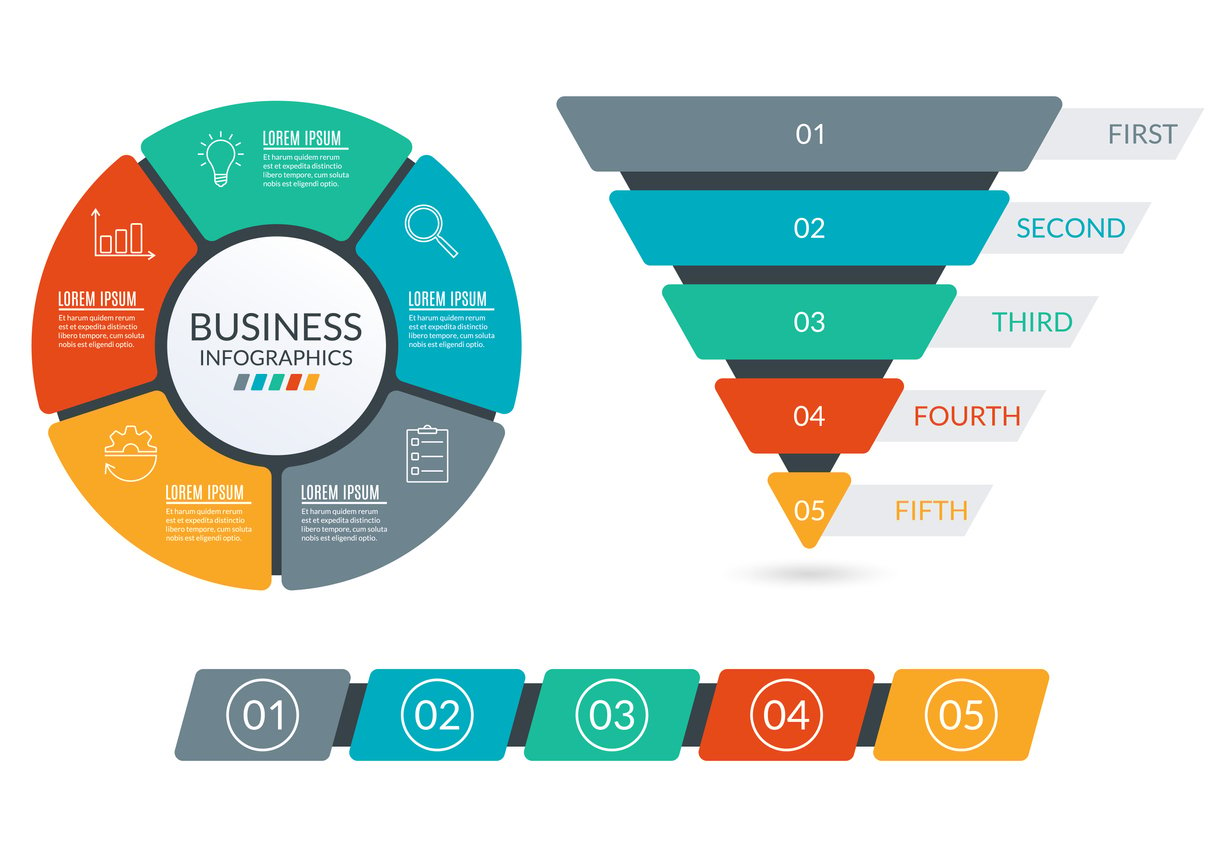
How To Efficiently Track Sales Activities & Sales Orders With a Sales Tracker
 Updated on
Updated on
By Ringy
Table of Contents
Table of Contents
It's much easier to hit a piñata when you're not blindfolded.
Yeah, the entire point of the game is to reduce a person's sensory perceptions with a blindfold and spinning them around in circles until they're dizzy, then giving them a big stick and telling them to let loose.
You better stand back, because otherwise, someone is likely to lose a tooth.
But if you do manage to hit the piñata while you're wildly flailing a blunt object around, you're rewarded with a pile of treats.
That might happen in sales too—if you keep pushing and trying, you'll eventually make the sale, at least sometimes. But chances are you'll also be frustrated, unsure, and feel lost with how to achieve consistent success.
It's much easier to track every aspect of your sales process to help guide you and your team towards smashing sales targets and growing business—rather than throwing everything at the wall to see what sticks.
That's where a sales tracker comes in handy.
What is a Sales Tracker?
A sales tracker helps you keep accurate and complete records of the activities, orders, transactions, and any other aspect of your sales process. It's an essential tool to help you achieve a rock-solid sales strategy.
Salespeople and sales managers alike can view important information like prospect details, quotas, contracts, and more to keep everyone on the same page.
A sales tracker details your inside sales or outside sales process, giving you data that you can use to create actionable next steps for improving overall sales and customer experiences.
It also gives you a bird's-eye view of how your sales reps are doing in terms of sales activity and allows sales managers to highlight areas of success or improvement.
Sales tracking is typically done with a sales CRM like Ringy, so you can track, optimize, and manage sales metrics easily. Visuals like graphs and charts are the standard so you can quickly see and understand information.
How to Keep Track of Sales

Maybe you just signed up for a free trial of a Sales CRM and are chomping at the bit to see your sales information.
It's all well and good to have access to all your past and current sales, but which sales metrics should you be paying particular attention to?
While you might be able to name several metrics right off the bat that you would like to track, sometimes the most important metrics can be forgotten or missed altogether.
Other times, your sales tracker software might give you a lightbulb moment where you realize a metric you didn't consider before is being tracked and provides important, actionable information.
Here's a list of some of the most important sales metrics to track with a sales goal tracker:
Conversion rate
A conversion can be more than just a sale, it can be any action that has a positive impact on your sales or marketing process. Metrics like newsletter sign-ups, social shares, form submissions, and downloads (from your site) can be considered conversions if those metrics are important to your organization.
Tracking conversions of all shapes and sizes is essential for understanding how your sales pipeline is performing.
A very high-level way to calculate conversion rate is to take the total number of sales and divide it by the total number of leads for a given period, and then multiple by 100 to get a percentage.
Here's the formula:
Conversion Rate = total number of sales/number of leads * 100
For example, let's say a sales rep made 50 sales within 3 months and had 200 leads in the same period of time. Their conversion rate would be 25% for that 3 month period.
Now whether that's a good conversion rate or not depends on what is usual for your company, based on typical sales for that period of time. That's where a sales tracker shines—within seconds, you can see typical sales for that time period, year over year, to help you gauge what an ideal conversion rate should be.
Sales Quotas
Sales quotas are set by the leadership team at a company or by sales managers, typically using data from a sales tracker. The purpose of sales quotas is to continue a mindset of growth by setting achievable sales targets.
Setting sales quotas for your sales reps is important to keep them engaged and working towards an achievable goal.
So how do you set sales quotas?
You can look at several different metrics and use the results gleaned from them to set different sales quotas:
- Total sales in a period: This is an important metric to track regular sales during a specific period of time. When you track total sales in a period, you start to see patterns like seasonality (changes in sales based on the time of year) and others that help you determine how to set achievable sales targets for your team.
- Sales cycle metrics: Similar to how you'd use patterns to see total sales in a period tracking, sales cycle metrics help you recognize problem areas or optimization opportunities within your sales cycle so you can work to address them.
- Sales by product or service: What products and services are selling and what isn't helps you and your team focus on what sells, identify opportunities for improvement, and determine how to accurately track KPIs based on products or services sold.
Sales Productivity Metrics

Productivity metrics in sales are not about watching your sales team's every move to make sure they're working each minute of an 8 hour day, rather it's about knowing how much time goes into your overall sales process.
According to Xant's survey of over 700 sales reps, only about 35.2% of their time is spent selling. That's only 14 hours out of a 40 hour work week!
Administrative tasks, if you're wondering, take up the biggest chunk of a typical sales rep's time.
However, how a sales rep at your company spends their time might be significantly different from these metrics. So the best way to understand exactly where their time goes is to track it.
With an understanding of where most of your sales rep's time goes, you can work to optimize their time towards selling.
Three metrics that can open up your eyes to the time investment in sales are:
|
Metrics |
Description |
|
Sales cycle duration |
|
|
Speed to lead |
|
|
Sales activity |
|
Lead Generation
Lead generation metrics are paramount to understanding how many sales opportunities are put in front of your sales team.
Typical lead generation metrics that you can keep track of with most sales order tracker software include:
- Number of leads generated: Do you know how many leads you currently have in your sales pipeline? Knowing the number of generated leads for a given period of time is essential for understanding what sales opportunities are in front of your sales reps.
- Sales by lead source: Which channels are generating the best opportunities for sales? For some businesses, it's social media. Others have success with paid advertising or organic search. Knowing which channel(s) bring in the best leads can help you focus marketing and sales efforts toward your most converting customers.
- Time spent on lead prospecting: The amount of time it takes to find a lead versus the amount of profit that leads bring in helps you gauge whether your lead prospecting efforts are worth it, or need to be optimized.
New vs. Returning Customer Sales
It's best practice in pretty much all types of industries and businesses to have a healthy amount of new and returning customers. If your sales team is focusing on one type of customer over the other and not giving equal attention to both, you could find yourself in a sales bind.
A sales goal tracker can help you determine if your balance of new and returning customers is on track with metrics such as:
|
Metrics |
Description |
|
Customer Acquisition Cost (CAC) |
|
|
Customer Lifetime Value (CLV) |
|
|
Repeat Customer Rate |
|
Why Sales Tracking with a Spreadsheet No Longer Cuts it
We have to address spreadsheets because believe it or not, people are still using this method to track sales.
While it's the traditional way that people tracked sales and there's nothing inherently wrong with still using that method, it requires a lot of manual entry, isn't very scalable, and can break easily if you accidentally delete something or change the formula.
The only time using a spreadsheet for sales tracking is fine is when you have a small business like an Etsy shop or small Shopify site where you're only making a few sales at a time, otherwise, you're sinking tons of time into spreadsheet maintenance.
Also, can you imagine tracking conversions, sales quotas, lead generation, and new and returning customer sales in a spreadsheet? Sounds like a nightmare.
Instead, it's better to use a Sales CRM with a robust sales pipeline to help you manage every aspect of your sales process.
Benefits of a Sales Tracking System
A sales tracking system provides many benefits to your sales processes and, ultimately, your business's bottom line.
Benefits of a sales tracking system include:
1. Greater understanding of customer buying behavior
The more information you have about your customers, the better decisions you can make to give them what they want and increase sales at the same time. For instance, sales tracking can tell you what time of day most of your customers tend to make purchases on your website. With this information, you can target communications like email and SMS marketing messages to go out around the same time.
2. Process improvement
Optimizing sales processes takes time and commitment, but your sales tracker can help you target sales bottlenecks so you can quickly identify areas of improvement. Other teams, like marketing and customer support, can also use a sales tracker to glean information on how to improve the processes that their teams follow as well.
3. Unify sales, marketing, and customer support teams
The better the teams that deal directly with customers get along, the better the sales revenue. A sales tracker is one tool that can provide the transparency all your teams crave, giving individual reps a better idea of customer communications within different departments.
4. Improve the customer experience
When all your teams have access to the same information about an individual customer, then that customer's experience is improved. Being able to look at a customer dashboard and understand each interaction that a customer has had through sales, marketing, and customer support gives valuable insight that can be used to improve the overall customer experience.
5. Optimize the marketing budget
Do you know which marketing channels bring in the best leads? With a sales tracker, you can keep track of the channels that bring in customers that have the highest chance of conversion.
Essential Features of a Sales Tracking System
A robust sales tracker goes beyond simply logging sales figures. It empowers your sales team to streamline processes, boost efficiency, and ultimately close more deals. Here's a breakdown of the key features to look for:
1. Ease of Use
A user-friendly interface is paramount. Your team shouldn't waste time deciphering complex software. Aim for intuitive navigation and clear data visualization.
2. Security
Since your sales tracker will likely house sensitive customer information, robust security features are crucial. This includes features like user authentication, data encryption, and access controls.
3. Built-in Intelligence and Productivity Tools
Look for features that provide actionable insights. Sales pipeline management helps visualize the sales process, identify bottlenecks, and prioritize leads. Sales forecasting can predict future sales based on historical data.
4. Efficient Activity Tracking
A good sales tracker app eliminates manual data entry. Features like automated call logging and email tracking ensure a complete record of all sales interactions.
5. Effective Lead Management
Managing leads effectively is vital for consistent sales growth. A good system allows you to qualify leads, prioritize them based on potential, and track their progress throughout the sales funnel.
By incorporating these features, you can empower your sales team with the tools they need to succeed.
Tips on How to Track Sales Effectively
Now that you understand the core features of a sales tracking system, let's look at how to leverage it for optimal results. Here are some key strategies:
1. Visualize Your Sales Process with a Sales Pipeline
Imagine your sales process as a series of stages, from initial contact to closing the deal. A sales pipeline, a core function of many sales tracking systems, allows you to visualize where each lead stands and identify any roadblocks.
2. Utilize Lead Scoring and Nurturing
Not all leads are created equal. Lead scoring assigns a value to each lead based on their potential and fit for your product or service. This allows you to prioritize your efforts and nurture high-scoring leads with targeted communication.
3. Define Key Performance Indicators (KPIs)
KPIs are quantifiable metrics that measure the success of your sales activities. Common KPIs include the number of leads generated, conversion rates (e.g., lead to customer), and average deal size. Tracking KPIs allows you to identify areas for improvement and gauge the overall effectiveness of your sales strategy.
4. Implement a Sales Tracking System (e.g., CRM)
A CRM system is a powerful sales tracking tool that goes beyond basic sales figures. It centralizes all your customer data, tracks interactions, and automates tasks, allowing you to manage your sales pipeline efficiently.
5. Capture and Review Sales Data Regularly
Your sales tracking system is a treasure trove of valuable data. Schedule regular reviews to analyze trends, identify opportunities, and measure progress toward your sales goals. A daily sales tracker view can be particularly helpful for keeping your finger on the pulse of your sales activity.
By following these tips and leveraging the power of a sales tracking system, you can gain valuable insights into your sales funnel, optimize your sales process, and ultimately drive sustainable sales growth.
Conclusion
Sales tracking software is essential to understanding where your sales reps are spending most of their time, customer buying habits, lead generation, sales quotas, and more.
To summarize:
- A sales tracker is an essential tool for helping you create a great sales strategy. It gives you a complete picture of how sales move through your company and helps you identify successes and areas of improvement.
- Metrics that should be tracked using a sales tracker app include conversion rate, sales quotas, sales productivity metrics, lead generation, and new vs. returning customers.
- The main benefits of using a sales tracking system are that it gives you a greater understanding of your customers' buying habits, it gives you the insight you need to improve processes, it helps unify teams, and it helps improve the customer experience.
It's clear that every company with sales, marketing, and customer support teams needs to use sales tracking software to optimize sales processes and provide transparency.
Ready to see how a sales tracker can help your business grow to new heights? Request a demo from Ringy today and let us show you.

Skyrocket your sales with the CRM that does it all.
Calling? Check. SMS? Check. Automation and AI? Check. Effortlessly keep in touch with your customers and boost your revenue without limits.

Take your sales to new heights with Ringy.
Sales in a slump? Ringy gives you the tools and flexibility you need to capture leads, engage with them, and turn them into customers.
Subscribe to Our Blog
Enter your email to get the latest updates sent straight to your inbox!
Categories
Related Articles







































































